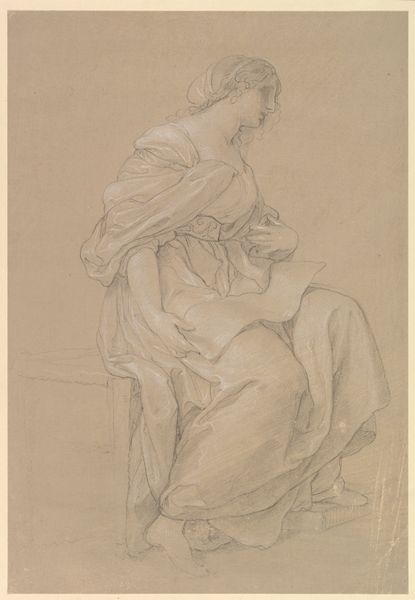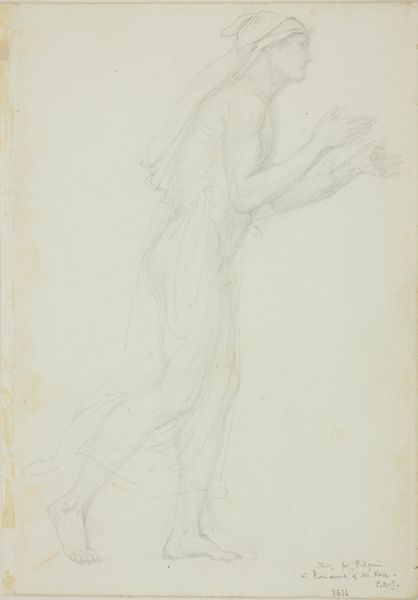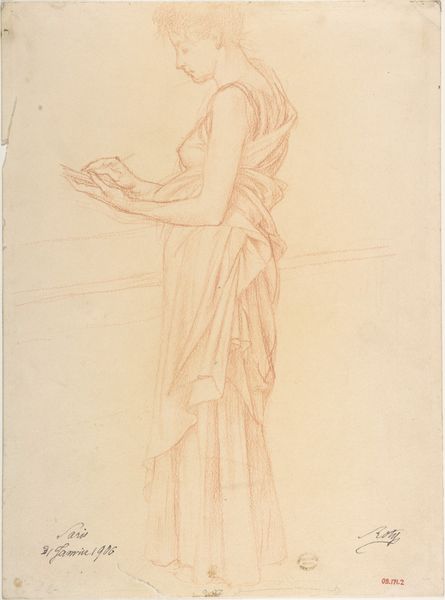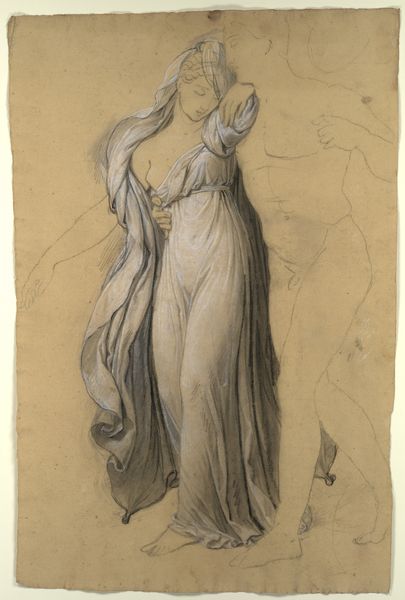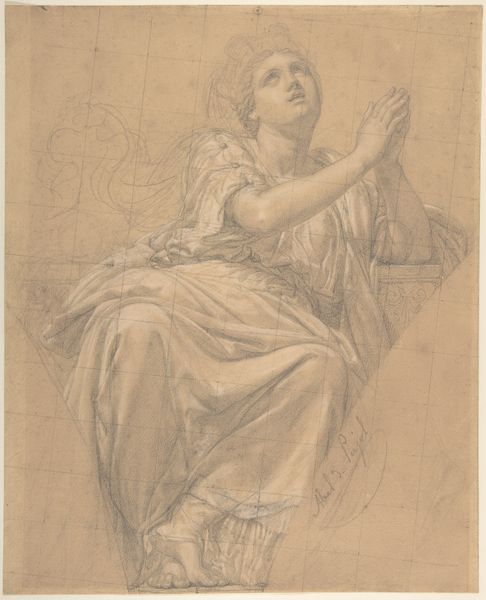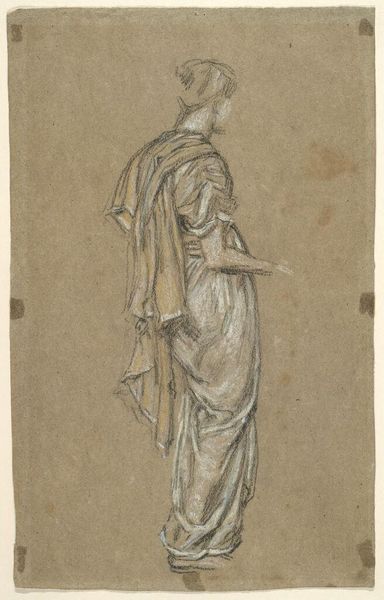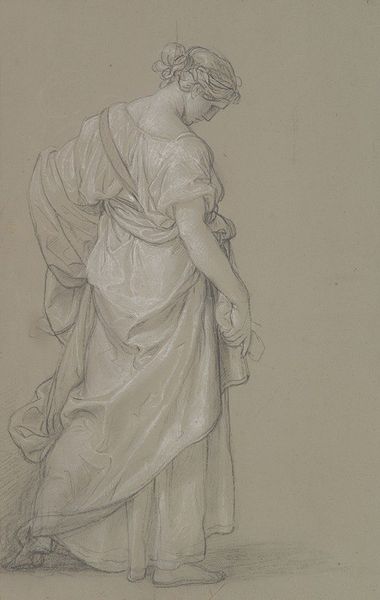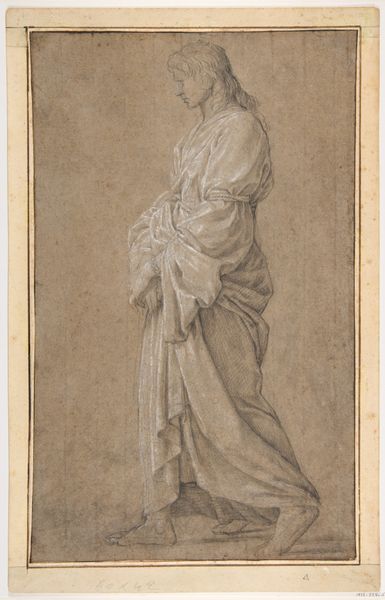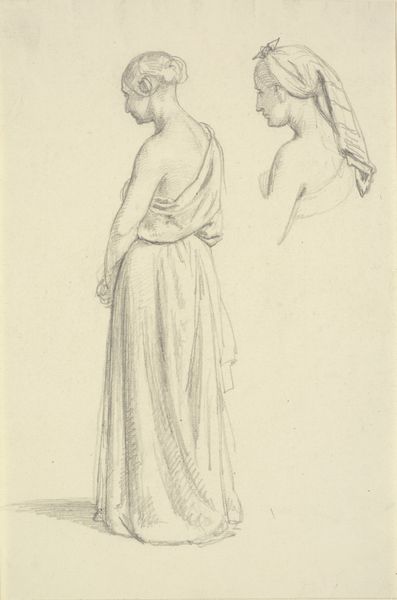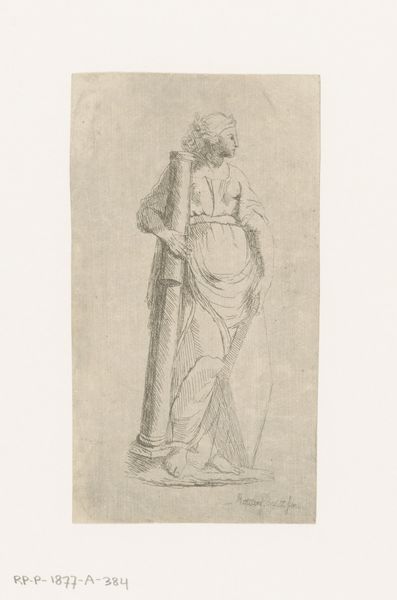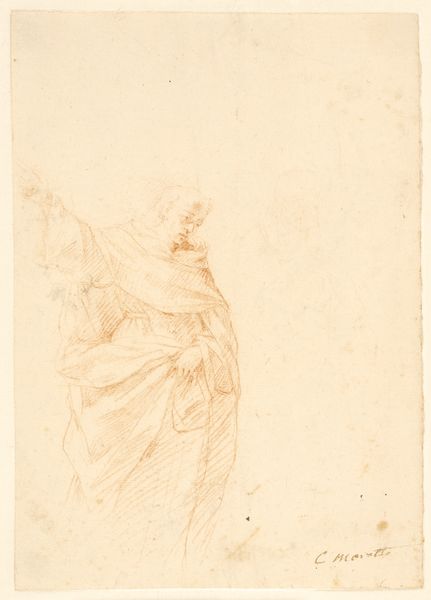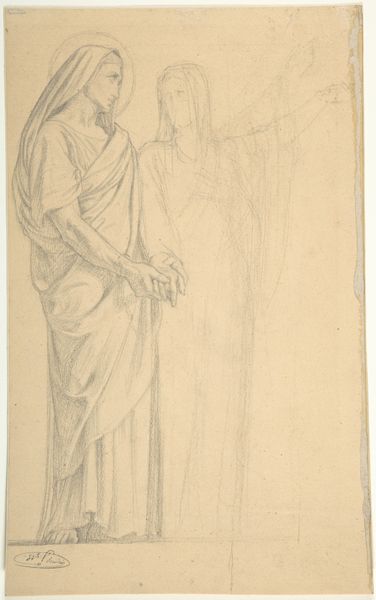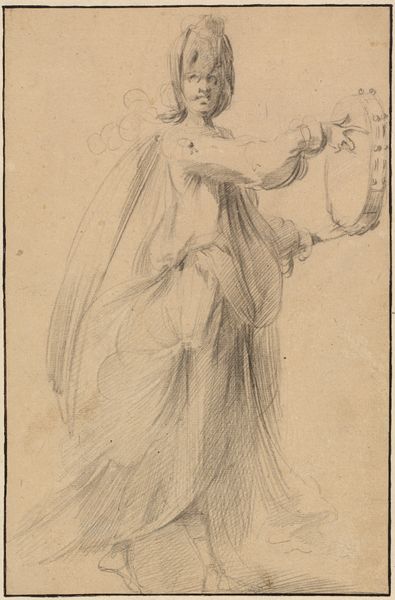
drawing, print, pencil
#
portrait
#
drawing
#
neoclassicism
# print
#
pencil sketch
#
figuration
#
portrait reference
#
pencil drawing
#
pencil
#
line
#
portrait drawing
#
academic-art
Dimensions: sheet: 13 3/4 x 10 9/16 in. (34.9 x 26.9 cm)
Copyright: Public Domain
Curator: As you approach, take in Wilhelm Schadow's "Study of a Woman Walking to the Right," created sometime between 1808 and 1862. What springs to mind? Editor: A kind of muted yearning, I think. It’s mostly in shades of gray—a preliminary sketch, perhaps? There's a soft grace in the line work, and she seems caught in a moment of reaching, though what she's reaching for remains delightfully ambiguous. Curator: Precisely! Schadow was, in fact, deeply engaged with neoclassical ideals and academic art, and this pencil drawing showcases the importance of preparatory sketches. Observe the detail in the drapery, and the way her posture suggests movement and intention. Editor: I see it now—the meticulous attention to the fall of fabric, the classical garb, even her hair, bound up neatly. Is she meant to be a muse or a historical figure, frozen in thought? What narrative threads do you suppose Schadow had in mind? Curator: That's where it becomes intriguing! Given Schadow’s background, he was interested in idealized forms. It's likely a figure study. It might have been preparation for a larger painting with classical undertones or to capture that perfect expressive pose and gesture. Editor: Her upward gaze gives me a hint of hope. It's also intriguing that Schadow chose this medium. This isn't grand painting; instead, it is an intimate and immediate moment captured on paper, where erasures and adjustments contribute to a sense of the artist's process unfolding before our eyes. Curator: Indeed. The pencil work feels spontaneous but simultaneously controlled and deliberate. He uses delicate linework and careful shading to create the texture and the illusion of form and depth. There’s tension between the finished quality of the drawing and the fleeting suggestion of a preliminary study. Editor: So it’s both a glimpse into the artist's studio and a carefully constructed image that prompts me to consider what this woman is reaching toward. Was she realized elsewhere or solely captured within the boundaries of this page? It leaves me thinking. Curator: And sometimes, isn't that what the best sketches achieve? Thank you for accompanying me and sharing your wonderful perspective. Editor: Likewise. These fleeting impressions and material experiments teach us just as much about art, emotion, and history.
Comments
No comments
Be the first to comment and join the conversation on the ultimate creative platform.
